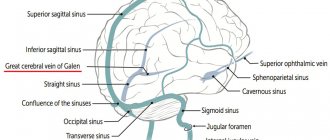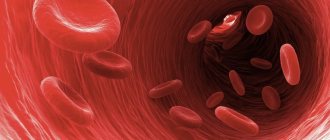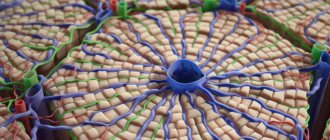What is alkaline phosphatase
Phosphatase is essentially an enzyme that belongs to the category of hydrolases. This enzyme is necessary in the body because it participates in the dephospholation reaction and ensures its success. The reaction occurs at the molecular level and is the process of detaching phosphorus from certain organic substances.
Phosphatase transfers the resulting phosphorus through the cell membrane, while the levels of this substance in human blood are constant and serve to determine the level of phosphorus-calcium metabolic processes.
Alkaline phosphatase in medicine is one of the enzymes that occurs most frequently in the body, but the main mechanism of its action has not yet been fully understood. In the human body, this substance is present in almost any tissue, but it comes in several varieties, in particular, phosphatase can be placental, renal, bone, intestinal and liver.
In human blood serum, as a rule, the presence of bone and liver phosphatase is observed, while their amounts are almost always the same, and changes in one of the indicators may indicate the presence of disorders.
Lactate dehydrogenase (LDH)
An enzyme that is contained in organs responsible for processing glucose, and in an oxygen-free cycle.
Yes, to begin with, it must be said that the main path of glucose breakdown occurs with the participation of oxygen, and oxygen-free oxidation is a “backup” process, but necessary in the early stages, when the oxygen cycle has not yet “turned on.” Why is glucose breakdown needed at all? This is the main process by which we obtain energy. LDH actively manifests itself in the heart, liver, kidneys, spleen, pancreas, and muscles. It converts lactate (the product of oxygen-free oxidation of glucose) into pyruvate, which then enters the final oxidation cycle and produces the maximum possible amount of energy. Interestingly, LDH has several isoforms - from LDH1 to LDH5, and all of them are found in different organs (LDH 1.2 - in the heart, a late marker of myocardial infarction, LDH4.5 - in the liver, during the destruction of liver tissue). Norm:
140-350 units/l.
Increase:
physiological - can be caused during pregnancy, after exercise and drinking alcohol, as well as taking caffeine, aspirin, insulin, heparin, interferon, and some antibiotics.
Pathological - occurs with myocardial infarction, acute or toxic hepatitis, cirrhosis and tumors in the liver, muscle injuries, acute pancreatitis, acute kidney pathologies and blood diseases (hemolytic anemia, B12-deficiency anemia, leukemia). Decrease:
in destructive kidney diseases, when the process has been going on for a long time, the function gradually decreases and the filtration of urea is impaired, which eventually appears in the blood (uremia).
Indications for analysis
An analysis to determine the level of alkaline phosphatase is prescribed if certain diseases are suspected.
In most cases, the patient is referred for phosphatase testing if:
- Suspicion of jaundice.
- Vomiting and attacks of nausea, the causes of which are unknown.
- Discoloration of feces.
- Darkening of urine.
- Fatigue quickly for no apparent reason.
In the cases listed above, the patient is prescribed a study of the level of alkaline phosphatase, as well as gamma-glutamyltransferase (GGT), which allows to identify possible stagnation of bile.
In addition, the analysis is also prescribed during the treatment of certain diseases, when a person is taking drugs that can cause a state of cholestasis.
Research is also carried out if a person has diseases of bone tissue, as well as during treatment of these ailments to monitor the effectiveness of therapy.
Low ALP levels during pregnancy
ALP levels during pregnancy are higher than normal
During a pregnancy that is proceeding well, the alkaline phosphatase level should be higher than in the normal state. This is explained by the fact that an additional substance begins to be produced by the placenta. In this condition, a reduced level is an indicator of placental insufficiency, which is dangerous due to termination of pregnancy or the birth of a child who will not be viable.
Blood phosphatase levels in adults and children
The normal values of this element can fluctuate within quite significant ranges, and on average the norm ranges from 44 to 147 IU/l. An important point for interpreting the study results is the patient’s age and gender.
In adolescents, as well as in women expecting a baby, the indicator of this element may be slightly increased, but this is not a pathology and does not indicate the presence of disorders. In adolescents, this phenomenon is explained by hormonal instability and ongoing internal changes in the body, and in pregnant women, the increase occurs due to the appearance of the placenta and an increase in the volume of bone tissue (in the child developing inside).
In different laboratories, the indicators will be different, and this should be kept in mind when interpreting the results. Different clinics may use different reagents during the study, since standards for determining this indicator have not yet been developed. But, as a rule, the range of differences in norms is not significant.
Table of normal alkaline phosphatase levels:
| Age | Standard in IU/l (international units per liter) |
| Children from birth to 10 years | From 150 to 350 |
| Teenagers from 10 to 19 years old | From 155 to 500 |
| Adults from 20 to 50 years old, men and women | From 85 to 120 |
| From 50 to 75 years | From 110 to 135 |
| From 75 years and older | From 165 to 190 |
Amylase
This is the main digestive enzyme that breaks down glycogen and starch, as well as sugar, and provides the body with glucose.
It is found in large quantities in the pancreas (from which, as part of pancreatic juice, it enters the lumen of the duodenum to begin its work - digestion) and in the salivary glands (yes, the process of breaking down carbohydrates begins in the mouth). That is why if something happens to the pancreas, amylase immediately lets you know about it. There are several varieties of this enzyme: α-amylase, β-amylase, γ-amylase, but the most common and therefore most indicative is used in diagnosis - α-amylase. Norm:
20-100 units/l.
Increase:
acute pancreatitis (already 4 hours after the onset of the attack increases by 8 times), exacerbation of chronic pancreatitis (increases by 3-5 times), pancreatic tumors, stones in the ducts, alcohol intoxication, as well as infectious parotitis (mumps), ectopic pregnancy.
Decreased:
pancreatic necrosis, cystic fibrosis (hereditary disease of the enzyme system).
Reasons for the decrease in the indicator
Any deviation from the norm is considered incorrect and this often hides some disease or pathology. What does a decrease in alkaline phosphatase mean in a biochemical blood test, what are the reasons for this phenomenon?
If the results of a biochemical analysis show that alkaline phosphatase is low, then you should consult a doctor as soon as possible.
This cannot be ignored, since a decrease in phosphatase levels may indicate certain diseases that can be very dangerous. In some cases, a decrease in this indicator may be no less dangerous than its increase.
Possible reasons for a decrease in phosphatase include:
- Conducting a large volume of blood transfusion.
- Disturbance in the functioning of the thyroid gland, and primarily its hyperfunction.
- Presence of cretinism.
- Various forms of severe anemia.
- Hypophosphatosia. This disease is very rare and usually congenital. It is a special pathology in which softening of bone tissue occurs.
- The presence of osteoporosis, which in most cases is an age-related disease.
- Lack of essential vitamins in the body, in particular folic acid, as well as B12 and B6.
- Insufficiency of certain elements in the patient’s body, in particular zinc and magnesium.
- Taking certain medications, since certain medications can affect the level of this element, leading to its decrease.
A decrease in alkaline phosphatase during pregnancy (normally it should be slightly elevated) may indicate serious placental insufficiency. This condition requires urgent help.
In order to adequately assess the patient’s condition and establish the exact cause of the decrease in phosphatase, the doctor will need to conduct a number of additional studies, and in some cases, consult other specialists. It is also important to remember that the boundaries of the range of normal values are quite wide and almost always depend on the age of the patient.
In women, the level of alkaline phosphatase is usually slightly lower than that in men of the same age group, with the exception of periods of gestation, when the level of the element increases.
Since a decrease in phosphatase can be observed even in healthy people, it is important to take into account that it is impossible to make a specific diagnosis and draw conclusions about the presence of certain diseases based solely on studying the level of phosphatase, since such a diagnosis will be biased and inaccurate.
If a significant decrease in the indicator is detected, the doctor can only suspect the presence of some kind of illness, but to obtain a complete picture of the condition, more detailed and specific examinations are always required.
Hypophosphatasia: how to suspect a disease in a child? Clinical observations
INTRODUCTION
Domestic and foreign scientific publications describe in detail the classification, variety of clinical symptoms, principles of laboratory diagnosis and results of molecular genetic studies for hypophosphatasia [1–4]. It is clear that hypophosphatasia is a progressive hereditary metabolic disease caused by alkaline phosphatase (ALP) deficiency, which occurs due to a mutation in the ALPL gene, mapped to chromosome 1 (1p36.12), encoding the tissue-nonspecific ALP isoenzyme (TNAS).
The pathogenesis of hypophosphatasia is quite well studied. Normally, the TNAP enzyme directly influences the cleavage of the phosphate group from inorganic pyrophosphate, the released inorganic phosphate binds to calcium, forming hydroxyapatite crystals necessary for the mineralization of the bone matrix. As a result of a deficiency of TNAP activity, inorganic pyrophosphate is not broken down and hydroxyapatite crystals are not formed, which, of course, leads to impaired mineralization of bone tissue. In turn, inorganic pyrophosphate accumulating in plasma and tissues combines with amorphous calcium phosphate to form calcium pyrophosphate crystals, which causes nephrocalcinosis or causes arthritis [5].
Another extremely important function of TNAP is the abstraction of phosphorus from pyridoxal-5-phosphate, which makes it possible for pyridoxal to penetrate through cell membranes into the central nervous system, where the phosphate is reattached to pyridoxal. Newly formed pyridoxal-5-phosphate acts as a cofactor for many neurotransmitters, and its deficiency in the central nervous system leads to the development of pyridoxine-dependent seizures[6].
Depending on the age of onset of hypophosphatasia, a perinatal form is distinguished (the appearance of symptoms already in utero or immediately after birth); infantile, or infantile (the appearance of symptoms in the first 6 months of life); pediatric and adult forms (the appearance of clinical symptoms before the age of 18 and later, respectively). The form of the disease largely determines the severity of its course - from the 100% lethal (in the absence of therapy) perinatal form to the relatively mild course in the adult form.
Severe forms of hypophosphatasia develop, as a rule, in the presence of a homozygous or compound heterozygous mutation in the ALPL gene. ALP is expressed on the cell surface as a homodimer, so some heterozygous mutations can reduce the activity of the entire homodimer, leading to a dominant negative effect. As a result, the presence of a mutation even in one allele can provoke the development of the disease.
Carriers of the same mutation in a family may have different degrees of disease severity, which indicates the presence of modulating factors.
In some cases of hypophosphatasia, it is not possible to detect mutations in the ALPL gene, therefore, to verify the diagnosis, the leading criteria are clinical signs of the disease and a decrease in alkaline phosphatase activity below the norm for a given age and gender [7].
The only method of pathogenetic treatment of hypophosphatasia is lifelong enzyme replacement therapy with the drug asfotase alfa, which is a human recombinant tissue-nonspecific chimeric Fc-deca-aspartate glycoprotein ALP. According to the literature, the use of asfotase alfa in the perinatal form of hypophosphatasia promotes better survival of patients compared with that in the control group: 95% versus 42% at the age of 1 year, 84% versus 27% at the age of 5 years, respectively (p < 0.0001 in the Kaplan-Meier model, which estimates the proportion of patients who survived for some time after taking a certain drug)[7].
We provide a description of clinical cases of hypophosphatasia in children.
CLINICAL CASE 1
Boy Ch. was transferred from the State Budgetary Healthcare Institution "Perinatal Center" (Tyumen) to the Department of Neonatal Pathology of the State Budgetary Healthcare Institution Regional Clinical Hospital No. 2 (Tyumen) at the age of 5 days with a diagnosis of transient tachypnea in a newborn. Congenital malformation - defect of the skull bones, aplasia of the parietal and temporal bones. Hypophosphatasia? — to verify the diagnosis and determine treatment tactics.
From the anamnesis of life and illness it is known that the child was born from the first spontaneous birth at 38.3 weeks, in a cephalic presentation, with an Apgar score of 7–7 points. At birth, body weight is 3570 g, length is 54 cm, head circumference is 35 cm, chest circumference is 34 cm.
Ultrasound of the fetus at 29.6 weeks diagnosed hypoplasia of the nasal bones. At birth, skeletal disproportions, shortening and deformation of the limbs attracted attention; the chest is flattened, there are no bones of the brain skull (membranous skull). Tachypnea was noted 2 hours after birth, requiring short-term respiratory support.
At the time of admission to the neonatal pathology department, the child’s condition was moderate, his consciousness was clear. The limbs are shortened, deformed due to intrauterine fractures of the tubular bones, the skull is membranous, the chest is flattened, both halves of the chest are symmetrically involved in the act of breathing. There are no respiratory disorders, respiratory rate is 42 per minute. Oxygen saturation - 98%. Diffuse muscle hypotonia, hyporeflexia, decreased motor activity. Heart rate - 148 per minute. Breastfeeding, amount of nutrition according to age, absorbs.
The most significant examination results for diagnosing the disease
Phosphorus level - 2.21 mmol/l (normal - 1.45-2.16 mmol/l), total calcium - 2.36 mmol/l (normal - 2.2-2.5 mmol/l), alkaline phosphatase - 28 U/l (normal is 53–128 U/l). There is a persistent increase in phosphorus content and a decrease in the level of alkaline phosphatase in dynamics, an increase in the concentration of calcium in the serum to 3.1 mmol/l, ionized calcium - to 1.7 mmol/l. The content of parathyroid hormone and vitamin D is within the reference intervals.
X-ray of the skeletal bones: the frontal bone is represented by two plates, two plates of the temporal bones, multiple fractures of the ribs on both sides, a fracture of the sternal third of the right clavicle without displacement, fractures of the distal and proximal thirds of the humerus, radius and ulna on the right and left, fractures of the proximal and distal metaepiphysis both bones of the right and left shin. Deformed ischial bones, wings and body of the ilium. The tubular bones are deformed, with a weak periosteal bone reaction, with a rough cyst-like restructuring of the structure. The growth zones of the bones are not determined (Fig. 1).
Rice. 1. X-ray of the skeletal bones and skull of patient Ch. Photo by the authors
The patient underwent a molecular genetic study (next-generation sequencing and Sanger sequencing), a variant of the nucleotide sequence c.1171delC was identified in exon 10 of the ALPL gene (chr1:g.21902393AC>A; rs779683021) in a heterozygous state, as well as a variant of the nucleotide sequence in exon 5 exon c.314C>T (chr1:g.21889619C>A; rs768348242) in a heterozygous state.
Based on clinical, laboratory and molecular genetic examination, the diagnosis was verified: Hypophosphatasia, perinatal form. Aplasia of the parietal bones, hypoplasia of the frontal, temporal and occipital bones. Multiple pathological fractures of tubular bones, ribs, clavicles.
When examining the patient's mother, a low level of alkaline phosphatase was determined - 32 U/l, and similarly in the father - 20 U/l (normal - 40-150 U/l). The parents do not have clinical manifestations of metabolic disease, the marriage is not related.
A molecular genetic examination of the proband's mother revealed a pathogenic variant c.1171delC (p.Arg391ValfsTer12) in a heterozygous state in the ALPL gene; In the proband's father, a probably pathogenic variant c.302A>G (p.Ala105Val) was found in a heterozygous state in the ALPL gene.
The examination of the child and parents was carried out in the genetic laboratory of the clinical genetic research sector of the Organizational and Methodological Department for Medical Rehabilitation of the City Hospital No. 40 (head of the sector - Ph.D. Glotov O.S.), St. Petersburg.
The patient was prescribed enzyme replacement therapy with asfotase alfa at a dose of 2 mg/kg subcutaneously 3 times a week; he tolerated the therapy satisfactorily, with no adverse events noted. Dynamic observation continued.
CLINICAL CASE 2
Girl U. was observed by a neurologist for muscle weakness from the age of 5 months, and underwent courses of massage and physiotherapy with little positive effect. From the life history: he holds his head from 3 months, sits from 10 months, crawls from 12 months, walks with support from 1 year 3 months, by 18 months he walks independently, unsteadily, balancing.
Due to a lag in the formation of static-motor functions against the background of moderate muscle hypotonia, in order to exclude a rickets-like disease, at the age of 1 year 2 months, the alkaline phosphatase level was determined for the first time: it was reduced to 98 U/l (with the norm being 156–369 U/l). Re-examined at 1 year 5 months: alkaline phosphatase level - 102 U/l (normal - 108-317 U/l), total calcium - 2.7 mmol/l (normal - 1.9-2.6 mmol/l), ionized calcium - 1.33 mmol/l (normal - 1.12–1.32 mmol/l), phosphorus - 1.9 mmol/l (normal - 1.29–2.26 mmol/l), 25(OH )D - 50 ng/ml (normal - 30-70 ng/ml), pyridoxine - 18.8 μg/l (normal - 2.2-27.9 μg/l), osteocalcin - 46.4 ng/ml ( norm - 8.4–33.9 ng/ml).
X-ray of tubular bones, hands with capture of the wrist joints: a delay in bone age by one epicrisis period with a violation of the order of ossification, pseudoepiphyses of the metacarpal bones, moderate osteoporosis of the bones of the legs are determined. Ultrasound of the urinary system: thickening of the kidney parenchyma, a large amount of fine suspension in the lumen of the bladder.
The child underwent a molecular genetic study - a variant of the nucleotide sequence g.21902399del in the ALPL gene in a heterozygous state was identified (the study was carried out in the laboratory of molecular genetics and cell biology of the Federal State Budgetary Institution "National Medical Research Center for Children's Health" of the Ministry of Health of Russia, the head of the laboratory is K. Savostyanov, Ph.D. .IN.). When examining the parents, a similar mutation was found in the child’s mother. Thus, patient U. was diagnosed with hypophosphatasia, the childhood form.
When examined at the age of 2 years 5 months, a moderate decrease in muscle tone, unsteady walking, and slight deformation of the skull remained. The child does not run, gets tired quickly, and can climb stairs with support. Fine motor skills have improved - she picks up a pencil and began working with small objects.
There is practically no speech, he communicates using facial expressions, gestures, and leads by the hand. Play activity is not developed, there is no active plot game, sometimes there are episodes of vocal reactions with emotional overtones. Communication is not active, she usually plays alone, reacts to contacts with close people, and does not play with peers. He understands instructions selectively, most of them follow them, and most often act by imitation.
Receives symptomatic therapy. The solution to the issue of prescribing enzyme replacement therapy is if the condition worsens over time. The prognosis for life is favorable.
CLINICAL CASE 3
At the time of contacting a pediatric endocrinologist, patient R. (age - 6 years 4 months) and patient A. (age - 1 year) had the same type of complaints: early loss of baby teeth without root resorption, rapid fatigue.
Data from the life history and illness of patient R.: a child from the first pregnancy, urgent surgical delivery (breech presentation of the fetus). Birth weight - 3490 g, length - 51 cm, head circumference - 36 cm, Apgar score - 8-8 points. From the age of 1 month, the child was observed by an orthopedist for hip dysplasia. From the age of 12 months, the boy’s baby teeth began to fall out, pain in the limbs and fatigue began, an unsteady gait and frequent falls. Examined by a dentist at the age of 13 months, the conclusion was: Generalized severe periodontitis. During the second year of life, the loss of primary teeth continued (Fig. 2).
Rice. 2. Tooth loss without root resorption in patient R. at the age of 2 years. Photos of the authors
By the age of four, the patient had repeatedly suffered from bilateral exudative otitis media, had bilateral conductive hearing loss of the 1st degree, and chronic adenoiditis. The child continued to have pain in the limbs, an unsteady gait and frequent falls, and poor posture had developed.
In 2021, a second boy was born into the family. Patient A. from the second pregnancy, the second urgent spontaneous birth, body weight - 3240 g, length - 52 cm, head circumference - 36 cm, Apgar score - 7-8 points. From the age of 1 month, the child is observed for congenital stridor. According to medical documentation, at the age of 3 months the baby was diagnosed with mild rickets, a course of general massage and vitamin D intake at a dose of 3000 IU/day were prescribed for 1 month.
At 11 months, the child fell from his own height, and his 2 lower incisors fell out. The parents consulted a pediatric endocrinologist to rule out a hereditary disease in their children.
The patients underwent a comprehensive examination as part of the differential diagnosis of phosphorus-calcium metabolism disorders; the main results are presented in the table.
Table Results of examination of patients R. and A., directly related to the diagnosis of the disease
The mother of the probands had an alkaline phosphatase level from 28.4 to 36 U/l (normal range is 30–120 U/l), molecular genetic analysis: the nucleotide sequence variant c.662delG, p.Gly221Valf*56 in the ALPL gene was determined by direct sequencing in a heterozygous state. The father of the probands had an alkaline phosphatase concentration of 38 U/L (normal is 53–128 U/L), molecular genetic analysis: direct sequencing revealed a nucleotide sequence variant c.571G>A, p.Glu191Lys in the ALPL gene in a heterozygous state. The parents of patients R. and A. do not have clinical manifestations of hypophosphatasia. The marriage is not related.
Patients R. and A. are recommended to undergo enzyme replacement therapy with asfotase alfa at a dose of 2 mg/kg body weight by subcutaneous injection 3 times a week for life. Dynamic observation continued. The prognosis for life is favorable.
DISCUSSION
Diagnosis of the perinatal form of hypophosphatasia does not present any particular difficulties. The presence of multiple intrauterine fractures, skeletal deformities, bone hypomineralization, pyridoxine-dependent seizures, respiratory failure and pulmonary hypoplasia in combination with a low level of alkaline phosphatase with normal values of parathyroid hormone, vitamin D, normal or elevated levels of calcium in the blood allows us to verify the diagnosis and exclude other forms of chondrodysplasia and osteogenesis imperfecta.
Determining a low level of alkaline phosphatase will be the starting point in the differential diagnosis of infant and childhood forms of hypophosphatasia with other variants of rickets-like diseases. It should be remembered that premature loss of primary teeth is sometimes the first and even the only sign of hypophosphatasia. In this case, tooth loss occurs without root resorption and is accompanied by a decrease in the height of the alveolar bone and expansion of the root canals.
Nonprogressive proximal myopathy may be an early sign of hypophosphatasia. It is believed that symptoms may result from elevated pyrophosphate levels or from other as yet unknown factors that may inhibit muscle function. Children with hypophosphatasia may have a “duck-like” (waddling) and slow gait[5].
In the described clinical cases 2 and 3, signs of hypophosphatasia were identified already in the first half of life; later, new symptoms appeared, but the diagnosis was verified only in preschool age. The presence of an infantile form of the disease in these cases cannot be excluded.
CONCLUSION
Doctors should pay attention to the mandatory assessment of alkaline phosphatase (ALP) levels as a fundamental laboratory test to confirm the diagnosis of hypophosphatasia in the differential diagnosis of metabolic bone diseases. It is important to note that ALP activity levels vary with age, and therefore the treating physician must ensure that the results reported by the laboratory reflect normal ALP levels for a patient of a particular age.
Received: 04/10/2020 Accepted for publication: 04/20/2020
Treatment for low phosphatase levels
To return the indicators to normal values, it is necessary to carry out complex therapy for the underlying disease, which led to the appearance of a decrease in the level of this element.
If the reason for the decrease in alkaline phosphatase is a lack of vitamins and important minerals, then the patient is recommended to use vitamin complexes, as well as change the diet and diet.
It is important to add to your daily menu foods that contain large amounts of the missing vitamin or microelement, for example:
- If there is a lack of vitamin C, you should enrich your diet with citrus fruits, onions (raw), as well as fresh black currants.
- If you are deficient in B vitamins, it is important to include many types of fresh fruits and vegetables in your diet, as well as red meats.
- To increase your zinc content, you should eat fresh cheeses, poultry, a variety of seafood, and meat.
- If there is a lack of magnesium, you need to eat legumes, primarily beans, natural dark chocolate, lentils, as well as pumpkin and sunflower seeds.
- The lack of folic acid can be replenished by eating legumes, various types of cabbage and fresh, varied greens.






